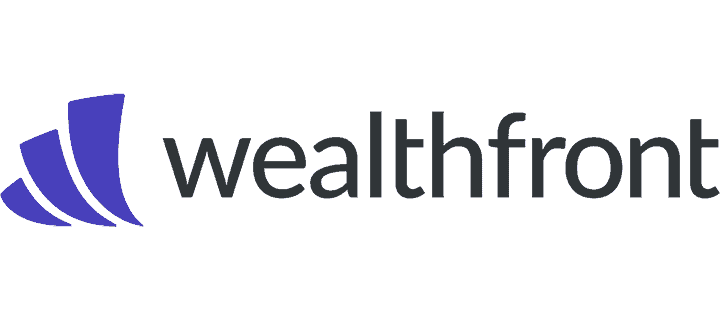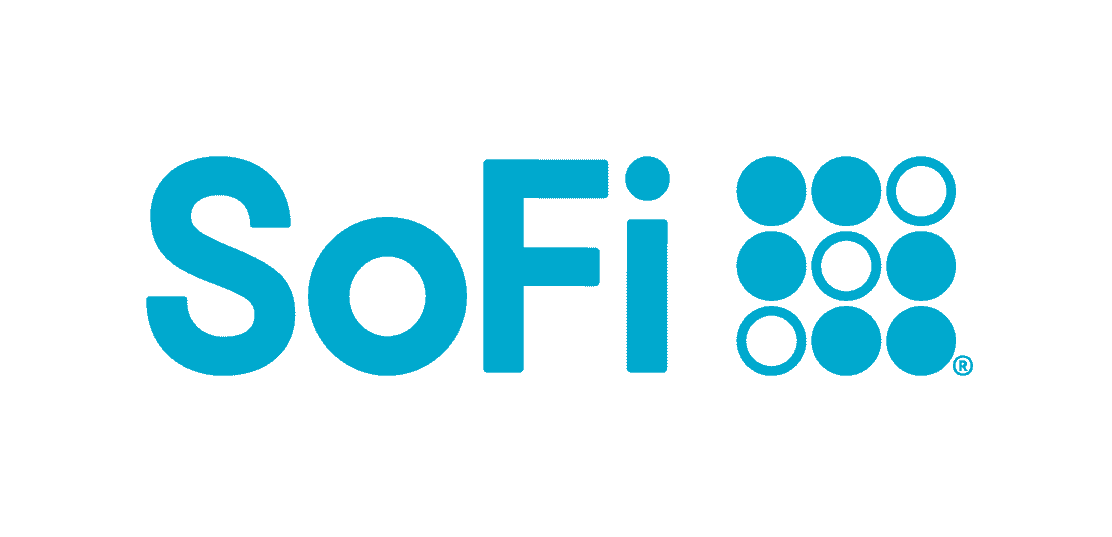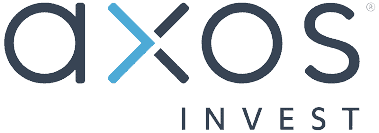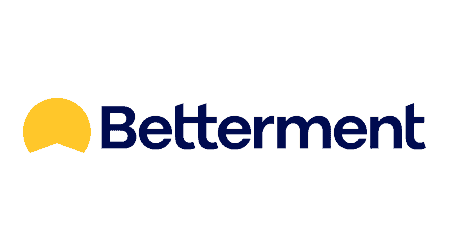The Best Robo-Advisers for Seniors
We chose Betterment as the best robo-adviser for seniors due to its wide variety of account options, low fee, and excellent sign-up bonus.
SeniorLiving.org is supported by commissions from providers listed on our site. Read our Editorial Guidelines
- $4 per month or 0.25 percent annual fee (varies by account balance)
- Individual, joint, IRA, trust, HYCA, and 401(k) rollover accounts
- Unique feature: Get up to $1,000 by opening and funding an account

- 0.25 percent annual management fee
- Individual, joint, IRA, trust, HYCA, and 401(k) rollover accounts
- Unique feature: Built-in financial planning tools

- 0.25 percent annual portfolio management fee
- Individual, joint, IRA, and HYCA accounts
- Unique feature: Access to financial planners at no extra cost

- Free and low-fee account options
- No trading fees, transaction fees, or rebalancing fees
- Easy sign-up process

- Assistance with funding different financial milestones
- Variety of portfolio customization options
- Automatic portfolio rebalancing
Our resident tech and financial experts tested the industry’s best robo-advisers and narrowed down the list to our top picks for older adults.
Our resident tech and financial experts tested the industry’s best robo-advisers and narrowed down the list to our top picks for older adults.
Learn MoreContents
Robo-adviser services manage your money or help you plan for retirement using online platforms and algorithms. Although the basic concept is the same, different robo-advisers offer different account options, portfolios, customer support, and fees. After days of hands-on testing and research, we chose Betterment as the top robo-adviser for seniors, thanks to their reasonable portfolio management fees, varied account options, and the ability to get up to $1,000 as a sign-up bonus. We’ll discuss Betterment Digital and the other robo-advisers that made the list to help you decide if a robo-adviser is the right fit for your money.
Our Methodology
How We Researched the Best Robo-Advisers for Seniors
Most robo-advisers make it easy to sign up and get started, which means it was even easier to get dozens of hours of hands-on testing with the top robo-advisers on the market. Our research and testing process allowed us to compare each product apples-to-apples:
- We visited the robo-adviser’s website and determined the process to open an account.
- Our team opened an account and tested out the available app or website. We focused on the ease of opening an account and what barriers may arise for seniors.
- We contact customer service to ask questions about their products and services.
- Our tech team compared our notes and narrowed down our list to the best robo-advisers for seniors.
How We Chose the Robo-Advisers for Seniors
While testing each robo-adviser, we considered the following factors to help select our top picks.
- Management fees: Nearly all robo-advisers charge a fee on assets under management (AUM). Some advisers may charge two distinct fees — one to manage the funds on your behalf and one to cover operational costs (also known as asset ratios). The industry standard for management fees is 0.25 percent annually on funds in an automated investment account. During our research, we looked for companies that could offer fees at or below 0.25 percent.
- Account offerings: Some older adults just want a place to park their retirement savings, while others want an all-in-one place to spend, save and invest. All of the robo-advisers offer at least two types of accounts: individual and some form of IRA. Many offer various other accounts, however, including standard banking options such as traditional checking and savings, so account holders can manage all (or most) of their funds in one place.
- Additional costs: Certain providers charge additional fees for owning funds or accessing premium memberships. Nearly all investment accounts charge expense ratios on ETFs and other investment funds to help cover their operational costs. Expense ratios can vary between robo-advisers.
- Tax-loss harvesting: Tax-loss harvesting is a strategy to reduce your tax burden on investment growth. Since robo-advisers are largely automated, robo-advisers with tax-loss harvesting automatically keep your tax burden to a minimum. Keep in mind that even though a robo-adviser may not offer tax-loss harvesting specifically, they may offer other tax-optimization strategies.
- Ease of use: Since we tested each robo-adviser individually, we can attest to their simplicity, from connecting a bank account and setting up an automated investment plan to the ease of self-directed investing and aligning your strategies with your long-term financial goals. We also consider things such as accessibility, as many robo-advisers offer website platforms and mobile apps, and low or no initial deposit requirements.
- Customer service: Like any type of investment portfolio, robo-advisers need human intervention from time to time. Perhaps you got locked out of your account or you can’t figure out why you were charged a fee. We made sure every robo-adviser on our list has actual human beings who can be reached if you have a question or issue to resolve.
- Sign-on bonuses: Sign-on bonuses may not be your top priority, but they can certainly add some incentive to choose one robo-adviser over another. Sign-on bonuses can include reduced portfolio management fees and funds deposited directly into your account if your balance reaches a designated threshold.
- Availability of human assistance: In addition to traditional customer service, it’s nice to know you can get trusted financial planners and advisers on the line when you need them. Not all robo-adviser companies offer this feature, but many do. Some charge extra to speak with a financial specialist, while others allow you access to financial specialists free of charge.
Why Trust Us?
Our experts have spent hundreds of hours reviewing and evaluating financial products and services for seniors. We consulted seniors to learn about their personal experiences with different banking institutions, investment firms, and robo-advisers to gain better insights into the advantages and disadvantages of choosing one over another.
Comparing the Best Robo-Advisers for Seniors in 2025

Betterment Digital
|

Wealthfront
|

SoFi
|

Fidelity Go
|

Axos Invest
|
|
|---|---|---|---|---|---|
| Rating | 4.5 | 4.5 | 4 | 4.3 | 4.2 |
| Portfolio management fee | $4 per month or 0.25% of account balance annually | 0.25% of account balance annually | 0.25% of account balance annually | Between 0% and 0.35% of account balance annually | 0.24% of account balance annually |
| Account minimum | $0 | $500 | $1 | $0 | $500 |
| Access to financial advisers | Yes (with Betterment Premium) | No | Yes (SoFi Plus required for ongoing access) | Yes (only with a balance of $25,000 or more) | Yes |
| Tax-loss harvesting | Yes | Yes | No | No | Yes |
| Sign-on bonus | Earn up to $1,000 by funding an individual investment account | None | 1% match on qualifying account contributions or rollovers | None | None |
| Mobile app | Yes (iOS and Android) | Yes (iOS and Android) | Yes (iOS and Android) | Yes (iOS and Android) | Yes (iOS and Android) |
-
1. Betterment Digital - Betterment Digital
 See Pricing Links to Betterment Digital
See Pricing Links to Betterment DigitalWhat we like most
- $4 per month or 0.25 percent annual fee (varies by account balance)
- Individual, joint, IRA, trust, HYCA, and 401(k) rollover accounts
- Unique feature: Get up to $1,000 by opening and funding an account
 Betterment DigitalSee Pricing Links to Betterment DigitalOverview:
Betterment DigitalSee Pricing Links to Betterment DigitalOverview:Highlights
- Fees: $4 per month or 0.25 percent annual AUM (for assets under $2 million)
- Minimum investment: $0 (certain accounts require different minimums)
- Account options: Roth IRAs, traditional IRAs, SEP IRAs, inherited IRAs, individual taxable accounts, joint taxable accounts, trust accounts, cash reserves and checking accounts through NBKC Bank
- Promotions: Earn up to $1,000 by funding an individual investment account
Betterment, one of the original robo-advisers, makes investing easier and more accessible with their automated investment tool — Betterment Digital. It offers a wide range of account options, making it easy to manage multiple accounts in one place, including automated individual investment accounts, various types of IRAs, and even checking and high-yield cash accounts (HYCA). The fee structure for investments can be a little high, however, especially if you’re starting with a lower account balance or want access to a financial adviser. Still, it’s a great option for older adults who want a trusted robo-adviser that offers features such as tax-loss harvesting.
» You Might Like: Which States Have the Lowest Tax Rates?
Pros & Cons:Pros About Betterment Digital
- Wide range of account options
- 0.10 percent discount on management fee for accounts over $2 million
- Free automatic rebalancing
- Dividend reinvestment
- Wide range of account options
- Access to financial advisers with Betterment Premium
- Tax-loss harvesting
Cons About Betterment Digital
- High account balance requirements for financial advice packages
- Limited investment products
- $75 fee to transfer investment funds from Betterment to another brokerage
- 1 percent management fee on cryptocurrency investments
Summary:Getting Started
To get started with Betterment Digital, the simple-to-use platform will ask you questions such as how much you want to invest and your preferred timing. You’ll then set up an investing goal or a general investing account. There’s no minimum account balance to get started, but after you make your first deposit, Betterment will recommend portfolios, handle tax-efficient withdrawals and do fractional-share investments. If you want to set up a Premium account, you’ll need to call and speak to an adviser.
» For Tax Help: Tax Credits and Deductions for Seniors
Just a heads up: The sign-on bonus sounds great, but it may be harder to achieve for older adults with less to invest. You’ll need to invest between $1,000 and $6,999 for Betterment to pay you a bonus of $50. The amounts and rewards go up in tiers from there:
- Invest $7,000 to $19,999: $125 bonus
- Invest $20,000 to $74,999: $150 bonus
- Invest $75,000 to $124,000: $300 bonus
- Invest $125,000 to $174,999: $500 bonus
- Invest $175,000 or more: $1,000 bonus
The funds must be invested within 45 days of enrolling in the program to receive the corresponding bonus amount. If you want to be eligible for a sign-on bonus with less cash to invest, consider Wealthfront’s $50 bonus for investing $500 within 30 days of opening your account or SoFi’s 1 percent IRA match (funds must stay in the SoFi IRA for at least two years).
Fees and Pricing
Betterment Digital charges $4 per month on AUM below $20,000, unless you opt in to recurring investments of at least $250. For AUM above $20,000 or accounts with qualified recurring investments, the management fee is 0.25 percent of AUM. That gives you access to all the standard features, such as multiple portfolio options, tax-saving tools, and automatic rebalancing. For certain types of accounts, such as a Betterment Core portfolio, you’ll need to pay separate expense ratio fees that could range from 0.04 and 0.11 percent.
It’s important to note that if you’re just starting a small nest egg with Betterment or otherwise don’t surpass the $20,000 threshold, the $4-per-month fee can cut into your money’s growth potential. If you start out with only $1,000 in assets under management, for example, you’ll be paying a fee of 0.4 percent. If you’re starting small, you’re better off with a low- or no-fee robo-adviser, such as Fidelity Go. Keep in mind that you’ll also have to pay a $75 fee each time you move funds from Betterment to another robo-adviser or brokerage, but you can avoid the fee by moving funds to a linked checking account first.
» Dealing With Debt: Why Older Adults Shouldn’t Worry About Old Debts
With Betterment Premium, you’ll also have the option to consult with a financial adviser (and you’ll need to from the start!). Their advice package isn’t as accessible as it is with Axos Managed Portfolios, since it requires a $100,000 minimum balance and charges a 0.65 percent annual fee. They can, however, be a great option for older adults who have more assets and feel more comfortable speaking to a human from time to time. If your account has over $2 million invested, you can get a 0.10 percent discount on your management fee, knocking it down to 0.50 percent (not including potential expense ratios).
-
2. Wealthfront - Wealthfront

What we like most
- 0.25 percent annual management fee
- Individual, joint, IRA, trust, HYCA, and 401(k) rollover accounts
- Unique feature: Built-in financial planning tools
Overview:Highlights
- Fees: 0.25 percent annual management fee
- Minimum investment: $500 (or $100,000 for enhanced portfolio customization)
- Account options: Traditional IRAs, Roth IRAs, SEP IRAs, 401(k) rollovers, 529 plans, individual taxable accounts, joint taxable accounts, and trust accounts
- Promotions: None
Similar to Betterment, Wealthfront is a leader in automated investing. The platform can help you achieve your retirement goals with a standard 0.25 percent annual management fee. Also like Betterment and Axos Managed Portfolios, the company’s tax-loss-harvesting service helps many customers recoup their fees through tax savings. Wealthfront offers a wide selection of account types, so you can save for retirement, set up a 529 college savings account for your grandchildren, prepare trusts for your estate, and more.
Pros & Cons:Pros About Wealthfront
- Speedy customer support for technical assistance
- Competitive management fees
- Tax-loss harvesting
- Automatic portfolio rebalancing
- Won’t sell your trade data
Cons About Wealthfront
- Can’t customize portfolios less than $100,000
- No human financial advisers available
Summary:Getting Started
We found it extremely easy to open a Wealthfront account. The biggest downside was that we had to move $500 into our Wealthfront account to see what the platform could do, something that isn’t necessary with robo-advisers such as Betterment Digital and Fidelity Go. We chose the account we wanted (an individual taxable account), and then answered questions about our age, income, goals, and so on. That helped Wealthfront recommend an investment strategy, although it still gave us the option to choose among varied investment strategies. We liked the combination of personalized strategies and the freedom to tweak them to our liking. Finally, we linked a bank account and made the $500 transfer to get started.
You can do all of that using the Wealthfront mobile app or website. But just because it’s digital doesn’t mean you’re without help. You can call a product specialist if you need technical assistance with the app or help finding information on the website. That’s an offering we think makes the platform truly senior-friendly. Plus, in our experience, Wealthfront’s product specialists typically answer the phone in under 10 seconds.
Fees and Pricing
You can do some basic portfolio customization with as little as $500, but Wealthfront doesn’t let you customize where your funds are invested unless you deposit at least $100,000. That’s why it’s best for older adults who want a robo-adviser to manage their retirement assets, but still want the freedom to direct their portfolio as they see fit.
The pricing is pretty straightforward with Wealthfront. Unlike Betterment and Fidelity Go — which charge different fees based on your assets under management — Wealthfront charges a flat fee of 0.25 percent on most account types. You may be able to snag even lower account fees (as low as 0.09 percent) on certain types of investments. However, all managed accounts with Wealthfront also charge a separate 0.08 percent ETF expense ratio fee. Still, the relatively predictable fee structure makes it easy to know exactly how much you’ll be charged based on the size and type of account you have.
» Estimate Your Returns: IRA Calculator
While Wealthfront no longer has a sign-on bonus, it does give new and existing customers a chance to boost their accounts. You can get up to $5,000 managed for free when you refer a friend who opens an automated investing account. They’ll also enjoy up to $5,000 managed for free — and this offer continues at no cost as long as the friend sticks with Wealthfront.
-
3. SoFi - So-Fi Automated Investing

What we like most
- 0.25 percent annual portfolio management fee
- Individual, joint, IRA, and HYCA accounts
- Unique feature: Access to financial planners at no extra cost
Overview:Highlights
- Fees: 0.25 percent annual management fee
- Minimum investment: $50
- Account options: Individual investment accounts, joint investment accounts, traditional IRAs, Roth IRAs, SEP IRAs, and traditional rollover IRAs
- Promotions: Up to $1,000 in stock when you fund a new account
SoFi Automated Investing manages financial portfolios and offers financial guidance using a computer algorithm. The SoFi platform used to be 100 percent free, but the company has since followed in the footsteps of nearly every other major robo-adviser and added a 0.25 percent AUM fee. Older adults can open several account types, including joint personal investment accounts. You can choose from 10 portfolios with diversified low-cost ETFs.
SoFi isn’t new, but their robo-adviser service has been around only since 2017. That’s something to consider as you decide which robo-adviser is right for you. Overall, we think SoFi is a great fit for budget-conscious older adults looking for simple automated investing and retirement planning. We especially love that all users gain access to certified financial planners and customer support.
Pros & Cons:Pros About SoFi
- Traditional online banking services
- Competitive management fees
- Goal planning
- Auto rebalancing
- Diversified portfolios to help reduce risk
- Customer support by chat and phone
- Unlimited access to certified financial planners
Cons About SoFi
- No tax-loss harvesting
- Limited account options
- Shorter track record compared to other services
- Separate expense ratio fees
Summary:Getting Started
SoFi makes it easy to get started, especially since they offer everything you could ask for from an online banking service. You can open a checking and savings account in addition to individual investment accounts and IRAs, potentially keeping all of your money in one place.
To start an automated investment account, we simply needed to answer a few questions about ourselves, choose the type of account we wanted, and fund it. From there, SoFi recommends various options to invest and explains the fee structure. Depending on the type of account chosen, you can begin investing with as little as $50 (although some account types require an initial deposit of at least $500).
» Check Out: IRA Minimum Distribution Calculator
The sign-on bonus with SoFi isn’t so much a sign-on bonus as it is a solid long-term addition to your retirement portfolio. If you contribute or roll over $20,000 into an eligible SoFi account, SoFi will continue to match 1 percent of your contributions up to the annual limit. The maximum contribution for someone over 50 in 2025 is $8,000,1 which means SoFi will match up to $80 if you max out your retirement account contributions. That isn’t a huge amount, but getting that extra 1 percent can add up over time!
Fees and Pricing
We were disappointed that SoFi got rid of its free robo-adviser service in 2024 and replaced it with the industry standard management fee of 0.25 percent.2 Plus, like Wealthfront, your account may be subject to a wide range of asset ratio fees, some as low as 0.05 percent and some as high as 0.51 percent. It depends on the assets in your account, the type of investment account you have, and how you direct the robo-adviser to invest your funds. We didn’t like how difficult it was to know how much we would be charged in asset ratios, since it can greatly affect the long-term growth of your account. If you want more predictability with your fees, you may prefer Axos Managed Portfolios or Wealthfront.
» Do the Math: How Much Money Do I Need to Retire?
It’s also important to note that if you sign up for a basic SoFi account, you’ll get the chance to have a one-on-one consultation with a financial planner exactly one time. If you want ongoing access to a financial planner, you’ll need to upgrade to SoFi Plus.
Pro Tip: SoFi Plus costs $10 per month, but if you open a SoFi checking account and enable direct deposits, you can get the service for free.
-
4. Fidelity Go - Best for Seniors With Low Balances
What we like most
- Free and low-fee account options
- No trading fees, transaction fees, or rebalancing fees
- Easy sign-up process
Overview:Highlights
- Fees: $0 for AUM below $25,000; 0.35 percent per year for $25,000 or more
- Minimum investment: $0 to open account; $10 to start investing
- Account options: Taxable individual and joint accounts, traditional IRAs, Roth IRAs, rollover IRAs, and health savings accounts (HSAs)
- Promotions: None
With Fidelity Go, you simply answer a few questions to get a recommended investment strategy. The hands-off service will monitor your account and the markets, and then automatically adjust your investments to help you reach your goals. The 14 strategies range from conservative to aggressive, but all offer diversification to try to minimize the risk involved. We love having plenty of options without the sense of being overwhelmed.
» Finances on Your Phone: The Best Budgeting Apps for Seniors
Pros & Cons:Pros About Fidelity Go
- Free and low-fee accounts available
- Easy sign-up process
- No trading fees, transaction fees, or rebalancing fees
- Unique HSA account offering
- Option for recurring monthly deposits
Cons About Fidelity Go
- Higher fees for larger account balances
- Limited account options
- No human advisors
- No tax-loss harvesting
Summary:Getting Started
Getting an account up and running is pretty easy with most robo-advisers. It’s even easier with Fidelity Go, because you don’t have to deposit a dime to launch your account. Just answer a few questions in the app (or on the website), tell Fidelity Go about your risk tolerance, select from the available portfolios that match your goals, choose the account type and link an account to fund your portfolio. You don’t have to deposit anything on day one, but you will need to deposit at least $10 to start investing.
» Build Your Budget: Tips to Building a Budget on a Fixed Income
Fees and Pricing
We love that Fidelity Go offers no or low fees for seniors with low balances. If you have less than $25,000 in your account, you don’t have to pay any management fees. Older adults with higher balances may want to consider a different service, however, because the company’s annual 0.35 percent fee is higher than Wealthfront and SoFi. That said, Fidelity’s use of Fidelity Flex Funds means no expense ratios, which could translate to lower fees than competitors that implement expense ratio fees — such as Wealthfront and SoFi.
» Also Check Out: Retirement Calculator
-
5. Axos Invest - Best for Portfolio Customization and Goal Setting
What we like most
- Assistance with funding different financial milestones
- Variety of portfolio customization options
- Automatic portfolio rebalancing
Overview:Highlights
- Fees: 0.24 percent annual advisory fee
- Minimum investment: $500 (any account under $500 is charged $1 per month)
- Account options: Individual non-retirement accounts, traditional IRAs, Roth IRAs, and traditional rollover IRAs
- Promotions: None
Axos Managed Portfolios makes setting and achieving short- and long-term financial goals a little easier. The company helps you fund financial milestones, such as preparing for retirement, setting up an emergency fund, and buying a new home. Based on the info you provide, Axos will recommend how much money to invest toward each milestone. You can go with their recommendation or make adjustments as you see fit.
FYI: If you’re leaning toward Axos, just know that account options are limited. You can’t set up a trust account, custodial account, or joint investment account.
Axos’ portfolio customization options also set the service apart. You can choose from 32 investment themes and add investments by sector. You could, for example, choose to invest in socially minded companies. Most other robo-advisers, such as Betterment and Wealthfront, don’t offer that level of customization. That’s why we think Axos is an excellent option for older adults who want the automation a robo-adviser can offer but still want some say in where their money goes.
Pros & Cons:Pros About Axos Invest
- Highly customizable portfolios
- Account setup in less than 10 minutes
- Low account management costs
- Short- and long-term goal planning tools
- Tax-loss harvesting
- Automatic portfolio rebalancing
- Auto-deposit scheduler
Cons About Axos Invest
- Limited account options
- Transfer-out and termination fees
- No human adviser option
- Can’t move money between goals
Summary:Getting Started
We liked getting started with Axos because it could all be done on the website in a matter of minutes. Like with Fidelity Go, we just answered a few questions about who we were and how we wanted our money to be invested. After linking a bank account, everything was ready to go. We didn’t have to deposit funds immediately, but it made more sense to deposit at least $500 from the start.
» Learn About: Getting Out of Debt
That was for two reasons. First, you can’t start investing until there’s at least $500 in your account, and second, any account with less than $500 is charged $1 per month in management fees. If you just want to experiment with a small amount of funds, platforms such as Axos and Betterment, which charge higher monthly fees for small accounts, may not be the best fit.
Fees and Pricing
As long as your account has $500 or more, you can expect 0.24 percent in management fees. That’s the lowest of any platform on this list by a very small amount. It’s also important to note that Axos charges varied expense ratio fees that average out to roughly 0.12 percent. Axos may not offer as many account types as Betterment or SoFi, but it’s still among the most affordable for older adults with more than $500 to invest.
» Protect Your Future: A Comprehensive Guide to Life Insurance for Seniors
What Is a Robo-Adviser?
A robo-adviser is an online platform that provides automated money-management solutions with limited (or no) human interaction. Instead of a real, live financial adviser managing your accounts, a digital service does it for you by using algorithms, not actual robots.
FYI: As of 2023, more than 1 in 3 U.S. adults had tried or actively used a robo-adviser to manage their investment portfolio.3 That number is expected to increase in the coming years.
It may sound scary to entrust your life savings to a computer program, but keep in mind that most humans who manage wealth use mathematical formulas and predictive models too. The service may feel very different than using a human financial adviser, but a robo-adviser essentially carries out the same functions for a fraction of the cost.
Most robo-advisers offer similar services, which often include:
- Online or in-app account setup
- Goal planning management
- Account and portfolio services
- Online financial education resources
- Customer service
How Do I Choose the Right Robo-Adviser?
If you think a robo-adviser is right for you, consider a few things before choosing a company.
Price
Make sure the cost is worth it. After all, the reason you’re turning to a robo-adviser is to help you grow your wealth. Always research fees and read the fine print before you sign up to ensure that the potential to increase your wealth outweighs any fees.
Did You Know? Wealthfront reports average annual returns of 7.89 percent.4 Those returns far outpace the company’s 0.25 percent management fees.
Account types and services
Managing multiple accounts across several platforms can get confusing. Make sure the robo-adviser you choose offers the account types, services, and features you need. For some, that may mean focusing on those with tax-loss harvesting. For others, having the option to talk to a human from time to time may matter most. Whichever provider you choose, you need to make sure it will help you reach your financial goals.
Reviews
Read reviews before you sign up for a service. Nearly every company looks great when you’re just browsing the website. Reading reviews from real customers will give you valuable insight as you choose a service. See mostly negative reviews? You’re likely better off with a different company.
Frequently Asked Questions
-
What is the best-performing robo-adviser?
Since users have a certain degree of control over their investments, it’s difficult to say which robo-adviser performs better than any other. In general, however, Betterment and Wealthfront are the two best-performing robo-advisers on the market.
-
Are robo-advisers worth the money?
If you want to grow your wealth and feel ill-equipped to make investment decisions on your own, robo-advisers are worth the relatively low cost. On the other hand, if you feel comfortable managing your own retirement funds, you could save on management fees by skipping robo-advisers entirely.
-
What is the largest robo-adviser?
Vanguard Digital Adviser has more assets under management than any other robo-adviser, followed by Charles Schwab, Betterment and Wealthfront.
-
What’s the biggest drawback to using a robo-adviser?
The biggest drawback to using a robo-adviser is that you’re paying a small fee to give up control of your investments to a computer program or AI-driven software. That may not appeal to older adults who prefer more traditional financial advisers or self-directed retirement accounts.
IRS. (2024). Various 2025 Tax Year Limitations.
SoFi. (2024). SoFi’s New Robo-Advisor Platform Expands Everyday Investors’ Access to Diversified Asset Classes.
Nasdaq. (2023). Are Robo-Advisors Still the Answer to Costly Advice or a Dying Breed?
Wealthfront. (2025). Historical Investment Performance.


